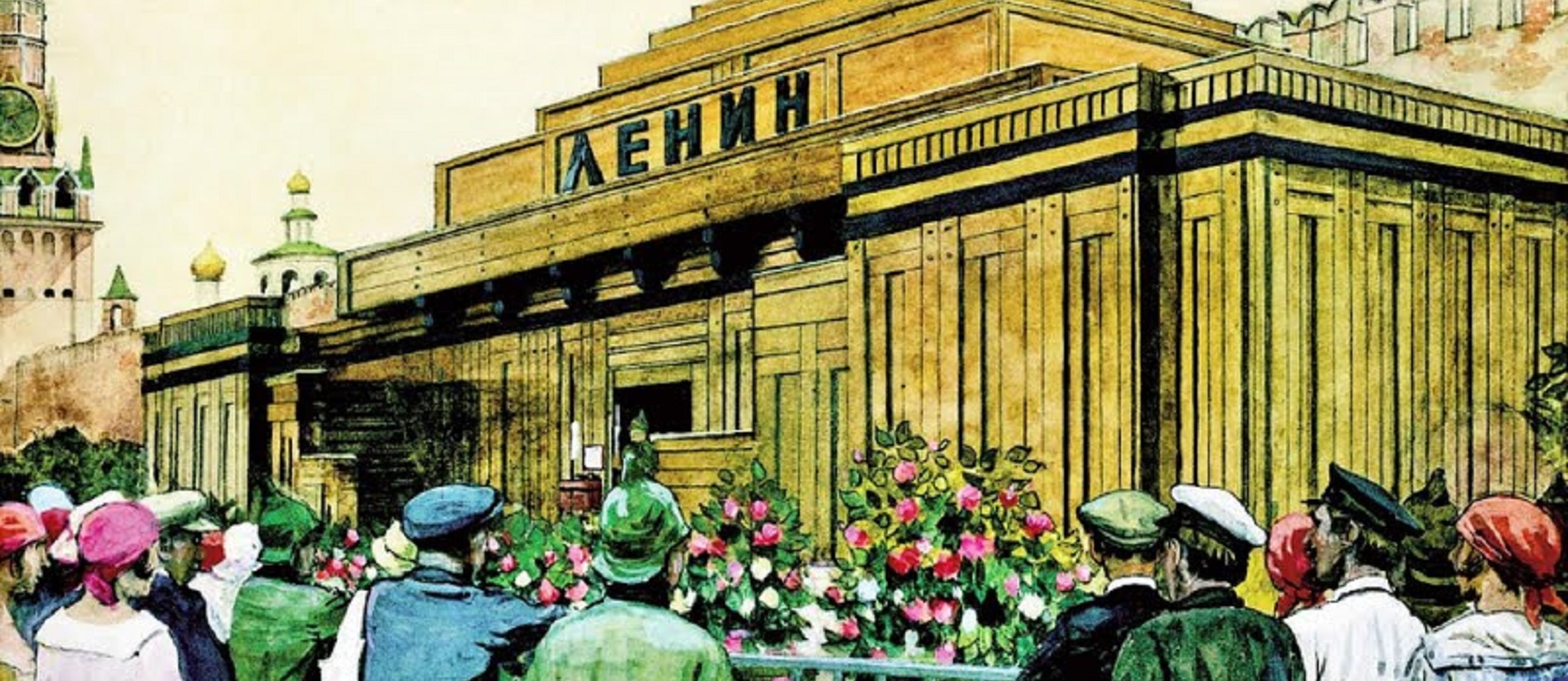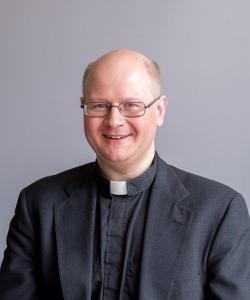Next month, April 22, marks the birthday of the architect of that cataclysmic “proletarian” revolution, Vladimir Ilyich Ulyanov — known to the world as Lenin.
These century-old events continue to dominate the news in modern-day Russia, where leaders grapple with how to deal with one tangible legacy of the Marxist past: After his death in 1924 at the age of 53, Lenin’s corpse became the centerpiece of a gargantuan, pyramid-shaped mausoleum in Red Square, where he still lies in artificially preserved repose. Today, many would like his body, and his legacy, buried.
Christian leaders in the United States kicked off the latest row in a March 10 encyclical signed by the bishops of the Russian Orthodox Church Outside of Russia (ROCOR) about the solemn centenary. “We must not under any circumstances justify the actions of those responsible for the deadly revolution,” they wrote. “A symbol of reconciliation of the Russian nation with the Lord would be to rid Red Square of the remains of the main persecutor and executioner of the 20th century, and the destruction of monuments to him.”
...the confessor of Patriarch Kirill of Moscow and All Russia, called Lenin "a villain of villains" who "should have been long ago thrown out of the mausoleum."
Their words echo some inside Russia. The Elder Iliy (Nozdrin) of the historic Optina monastery, the confessor of Patriarch Kirill of Moscow and All Russia, called Lenin “a villain of villains” who “should have been long ago thrown out of the mausoleum. Through him the Lord does not grant us the full development of our Fatherland.” (Patriarch Kirill, while sympathetic, has been non-committal.) The priest of the Kazan Cathedral in Red Square, which looks down on Lenin’s tomb both literally and metaphysically, said the mummified presence “is a kind of brake on the movement of the country forward.”
Burying the Bolshevik leader enjoys the support of the Chief Rabbi of Moscow, Berel Lazar, as well as multiple factions within the Duma, and a sturdy majority of citizens, according to numerous polls.
The big question mark is Vladimir Putin, who has sent a series of conflicting messages on the topic. In 2001, he opposed the burial for fear it would tell too many Russians that “they have worshipped false values.” In subsequent years, his close advisors Georgy Poltavchenko (a former KGB officer) and Vladimir Medinsky publicly raised the prospects of burial, apparently with Putin’s support. But in 2012, Putin said the “people should decide,” before likening Lenin’s mummification to the holy relics kept in Orthodoxy’s holiest site, Mt. Athos.
The president is eager not to alienate the 44 percent of Russians who see Lenin in generally positive terms, nor to pick purely symbolic fights with the Communist Party, which has the second-highest number of seats in the Duma. However, the resurgent Orthodox Church has made it clear that it wants to see Lenin interred, publicly citing his desire to be buried next to his mother in St. Petersburg.
If Orthodox Christians are eager to bury Lenin, it is less an act of spite than of reciprocation. His decree of October 26, 1917 — one of the first acts of the atheistic Bolshevik regime — ordered the seizure of all church and monastic property for redistribution to “the whole people.” The great famine of 1921-22 — which killed five million people due, in part, to his collectivization of farm land during the time of “war communism” — would give him the excuse he needed.
In a letter to the Politburo on March 19, 1922, Lenin wrote:
With the help of all those starving people who are starting to eat each other, who are dying by the millions, and whose bodies litter the roadside all over the country, it is now and only now that we can — and therefore must — confiscate all church property with all the ruthless energy we can still muster. This is precisely the moment the masses will support us most fervently, and rise up against the … religious conspirators.
“Think of how rich some of those monasteries are,” he wrote. “We must have those hundreds of millions (or even billions) of rubles” to consolidate Soviet strength.
The theft, he urged, should take place with “the sort of brutality that they will remember for decades.”
The Bolsheviks seized at least 2.5 billion rubles of gold from Russian churches and spent one million rubles on grain in 1922. The same year, Orthodox Church records show that 2,691 priests, 1,962 monks and 3,447 nuns were murdered. Having been deprived its property, and the people of their means of self-defense, the church entered a period so typified by persecution that it created an entire class of “New Martyrs” to commemorate the victims. The number of Orthodox churches plunged from as many as 50,000 before the revolution to 500 by 1940, and other faith communities suffered similar decimation.
Reappropriating church wealth paralleled the way the Bolsheviks despoiled the Russian people as a whole. “The present system arose,” former Russian politician Yuri Vlasov would assess in 1989, “entirely on the suppression of the individual, the powerlessness of each of us, and as a result, our defenselessness.”
Lenin parlayed economic domination into a totalitarian system that killed tens of millions of Russians and more than 100 million people worldwide. His legacy is a reminder that economic and religious liberty are inseparable.
In the 1980s, Soviet psychologist Igor Kon would coin a new term for the mindset created by decades of collectivism and state terror: “de-individualization,” of which the “denial of economic dignity” played a leading role. “Souls were destroyed” because, unable to purchase goods “with one’s labor,” people constantly had to cultivate the goodwill of a bevy of state apparatchiki through “ingratiating smiles” and other means.
Friedrich von Hayek understood all-too-well that “economic control is not merely control of a sector of human life which can be separated from the rest; it is the control of the means for all our ends.” Lenin parlayed economic domination into a totalitarian system that killed tens of millions of Russians and more than 100 million people worldwide. His legacy is a reminder that economic and religious liberty are inseparable.
Today, the economic cost to the Russian people of preserving Lenin’s ghoulish remains can be precisely denominated: 13 million rubles. Taxpayers spent that amount (approximately $198,000) last year to carry out the “biomedical work” to preserve “Lenin’s body as it looked in life.” His tomb is closed until April 16, as Lenin’s body undergoes two months of submersions in chemical solutions including formaldehyde, potassium acetate, hydrogen peroxide, and acetic acid solution, followed by injections to keep his cadaver looking supple.
The potential harm caused by Lenin’s continuing enshrinement, however, is incalculable. A 2015 psychological study found that nationally recognized heroes “may help people to understand the norms and values within society.” Lenin’s mausoleum serves, fittingly, as a perverse incentive for emulation.
There is precedent for Lenin’s removal from its place of honor. Josef Stalin’s remains were displayed next to Lenin’s from his death in 1953 until 1961, when Nikita Khrushchev ruled the arrangement “inappropriate.” Stalin is now buried in the Kremlin wall.
William Faulkner wrote — appropriately enough, in Requiem for a Nun — that “the past is never dead. It’s not even past.” But in this case, the detritus of a nation’s past can — and should — be buried in ignominy, denying Communism the capacity for a resurrection that it so fiercely denied.
This article first appeared as a Special Report on The American Spectator.




